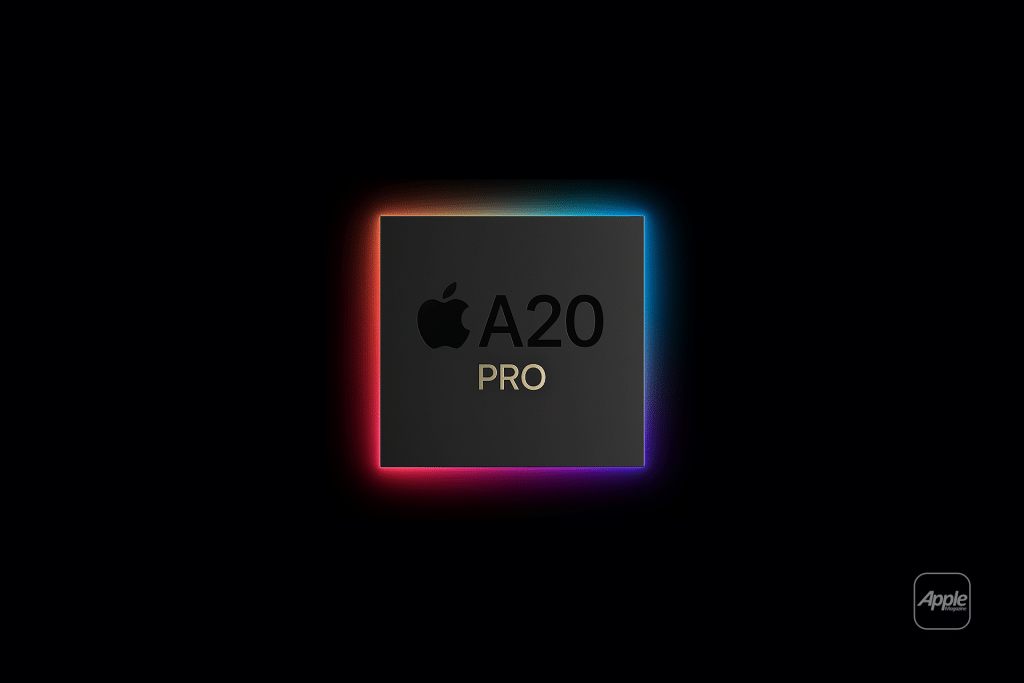The A20 chip will mark Apple’s first foray into TSMC’s 2nm process, a significant jump from the 3nm technology used in the A17, A18, and A19 chips. This process, known as N2, employs Gate-All-Around (GAA) transistor architecture, allowing more transistors to fit in a smaller space. According to industry reports, this could yield up to 15% faster performance and 30% better power efficiency compared to the A19 chip. For users, this translates to snappier app launches, smoother gaming, and extended battery life, addressing key demands in today’s smartphone market.
WMCM Packaging: Flexibility in Design
A standout feature of the A20 chip is its adoption of Wafer-Level Multi-Chip Module (WMCM) packaging, moving away from the Integrated Fan-Out (InFO) method used in prior chips. WMCM integrates the CPU, GPU, Neural Engine, and RAM directly onto the chip’s wafer, eliminating the need for a separate silicon interposer. This approach reduces the chip’s size, improves thermal management, and enhances component communication. For iPhone users, this means slimmer designs, less overheating during intensive tasks like video editing, and faster performance for AI-driven features.
More iPhone Variants on the Horizon
The flexibility of WMCM packaging allows Apple to create varied chip configurations, enabling a wider array of iPhone models. By mixing and matching CPU, GPU, and Neural Engine dies, Apple can tailor chips for specific use cases—think a high-performance GPU for gaming-focused Pro models or a beefed-up Neural Engine for AI-heavy tasks. This could lead to new iPhone tiers, such as budget-friendly options or specialized devices for photography and professional workflows, much like Apple’s diverse Mac lineup. Consumers may see models optimized for different priorities, broadening Apple’s market reach.
Enhanced AI and Battery Life
The A20’s 2nm process and WMCM packaging are set to supercharge Apple Intelligence features, such as real-time language processing and advanced image recognition. With rumors of 12GB of RAM in iPhone 18 Pro models, up from 8GB in the iPhone 16 series, multitasking and AI performance will see significant boosts. The chip’s improved power efficiency could also allow for larger batteries or new hardware features, like advanced sensors, without sacrificing battery life. This is a win for users who rely on their iPhones for demanding tasks throughout the day.
Competitive Edge in a Crowded Market
Apple’s move to 2nm and WMCM comes as competitors like Qualcomm and MediaTek also eye TSMC’s advanced processes. By securing early access to these technologies, Apple maintains its lead in chip performance, setting a high bar for Android rivals. The A20’s capabilities will likely enhance augmented reality and machine learning experiences, areas where Apple aims to differentiate its devices. However, the transition to WMCM is complex, requiring precise manufacturing, though TSMC’s reported trial yields of 60-70% signal confidence in meeting production demands by 2026.
Looking Ahead to the iPhone 18
The A20 chip is expected to power the iPhone 18 series, including a rumored foldable iPhone, launching in September 2026. Its advancements could enable sleeker designs and new features, aligning with Apple’s push for innovation in a competitive market. As software updates like iOS 26 roll out, the A20’s processing power will likely unlock new capabilities, ensuring iPhones remain at the forefront of mobile technology. For users, this means devices that are faster, more efficient, and better suited to their individual needs.
